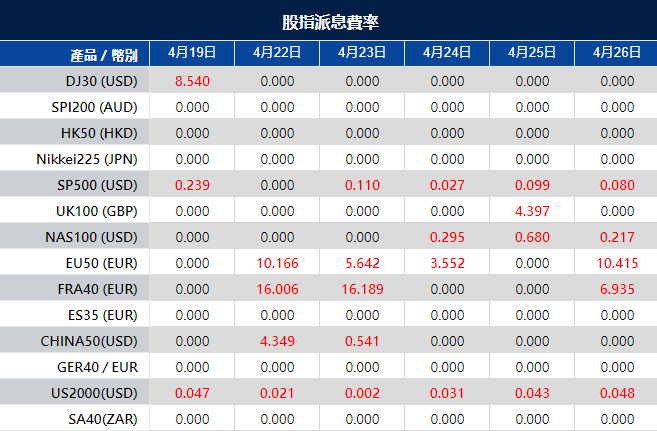
As we approach another significant week in the financial markets, several pivotal events are lined up that could influence market dynamics extensively. Here’s what traders at VT Markets should focus on:
Upcoming US Economic Indicators
US GDP for Q1: Due for release on Thursday, the preliminary estimate of US GDP for Q1 2024 is anticipated at 2.9%, following a previous quarter’s growth of 3.4%. This release will be pivotal in assessing the durability of the US economic expansion. Historically, a robust Q1 GDP figure has buoyed market sentiments but it’s crucial to remain cautious, as higher-than-expected growth could stoke fears of continued Fed tightening.
Core PCE Index for March: Set for Friday, this inflation measure will be scrutinised for any signs of persistent inflation pressures. Any deviation from expected levels could prompt a reevaluation of the Federal Reserve’s interest rate trajectory, potentially leading to market volatility.
Preliminary S&P Global PMIs for April: These early indicators of Q2 economic activity will provide insights into the ongoing recovery. Markets will likely react to the strength of these PMIs, with stronger figures possibly signaling a sustained recovery and weaker ones may incite concerns over economic momentum.
Anticipate Bank of Japan (BoJ) Decision
Rate Decision: This Friday’s decision comes at a critical time with recent policy shifts signaling a potential end to negative interest rates. Markets are keenly awaiting indications of possible rate hikes, especially given rising inflation in Japan. A hawkish stance could strengthen the yen, whereas a dovish one might exacerbate its current weakness.
Currency Intervention Watch: With the yen nearing 155.00 against the dollar, speculation about intervention from Japanese authorities to stabilise the currency is high. A significant intervention could disrupt market trends, particularly in currency pairs involving the yen.
European and UK Economic Releases
EU and UK PMIs: With these set to release on Tuesday, they are crucial for assessing the economic climate in both regions. The focus will be on how these figures might influence the European Central Bank and Bank of England’s monetary policy, especially with inflation concerns at the forefront.
BoE Rate Expectations: Markets have already priced in a 25bps rate hike by the BoE in September. This expectation could solidify further if upcoming economic indicators reinforce a robust economic outlook.
Australian Economic Data, Inflation
Australian CPIs: Wednesday’s CPI data will be key in assessing inflation trends and shaping the Reserve Bank of Australia’s rate decisions for the year. Given the mixed signals from previous data, this release will be crucial in determining the short-term monetary policy path.
Tech Earnings Report
Tech Reporting: With Alphabet and Tesla on Tuesday, followed by Meta on Wednesday, and both Microsoft and Amazon on Thursday, these reports are critical. The tech sector’s performance has been under the microscope after recent market corrections, and these earnings results could heavily influence market sentiment, either bolstering confidence with strong earnings or fueling concerns if results falter.
Start trading now — click here to create your live VT Markets account.




